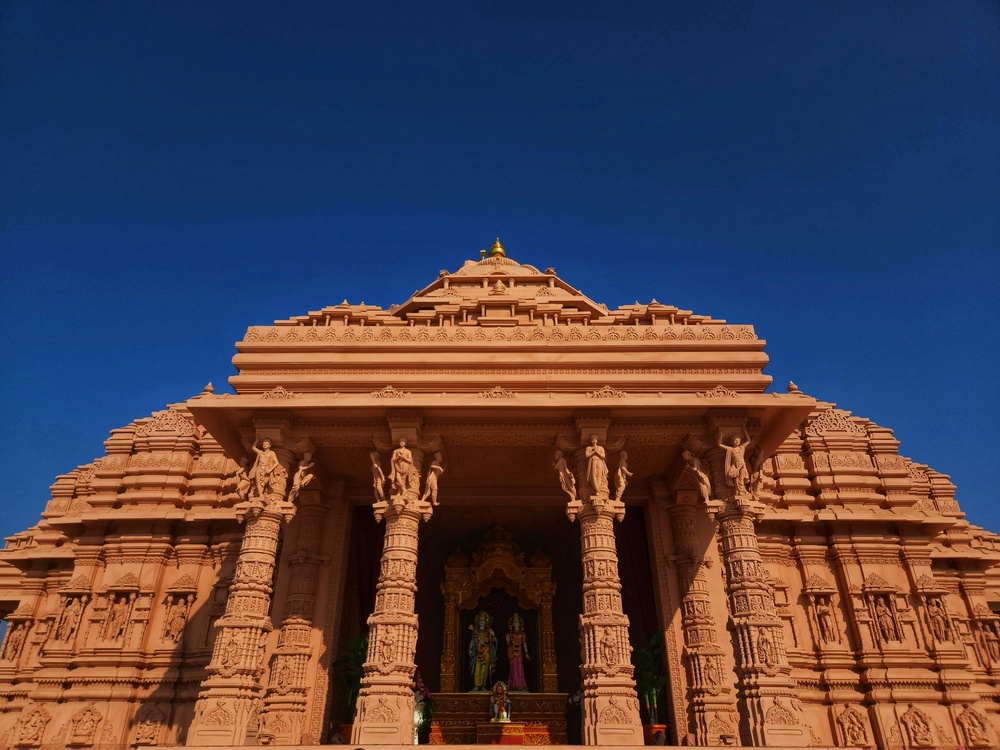Top 10 Places to Visit in Ayodhya for a Memorable Spiritual Journey
Ayodhya, nestled on the banks of the sacred Sarayu River in Uttar Pradesh, is one of India’s most revered cities. Known as the birthplace of Lord Rama, this ancient city holds immense significance for Hindus and attracts pilgrims from across the globe. Its serene ghats, magnificent temples, and vibrant cultural heritage make it a destination that blends spirituality with history. If you’re planning a trip, here are the top 10 places to visit in Ayodhya for a truly memorable spiritual journey.
1. Ram Janmabhoomi
The Ram Janmabhoomi is the most sacred site in Ayodhya, believed to be the birthplace of Lord Rama. The grand Ram Mandir is being constructed here, making it a must-visit for devotees. Visiting this site offers a profound spiritual experience, especially during aarti when chants and bells fill the air.
2. Hanuman Garhi
Located in the heart of the city, Hanuman Garhi is a hilltop temple dedicated to Lord Hanuman. It is said that Hanuman lived here to guard Ram Janmabhoomi. Devotees climb 76 steps to reach the shrine, where a stunning idol of Hanuman greets them. The temple offers panoramic views of Ayodhya and is especially lively during Hanuman Jayanti.
3. Kanak Bhawan
Kanak Bhawan, also known as the Golden Palace, is dedicated to Lord Rama and Goddess Sita. Legend has it that it was gifted to Sita by Queen Kaikeyi after her marriage to Rama. The temple’s golden crowns and intricate architecture make it one of the most beautiful places to visit in Ayodhya for both spiritual and aesthetic delight.
4. Nageshwarnath Temple
Dedicated to Lord Shiva, the Nageshwarnath Temple is believed to have been established by Kush, the son of Lord Rama. It holds special importance during Mahashivratri when thousands of devotees gather here. Its ancient charm and religious significance make it a peaceful stop on your Ayodhya journey.
5. Treta Ke Thakur
Treta Ke Thakur Temple is said to house idols of Lord Rama, Sita, Lakshmana, Hanuman, and Bharat that date back over 300 years. Built at the spot where Lord Rama is believed to have performed the Ashwamedha Yajna, the temple opens to devotees only on special occasions, adding to its mystical appeal.
6. Guptar Ghat
Guptar Ghat, located on the banks of the Sarayu River, is a serene spot with deep mythological significance. It is believed that Lord Rama took his final journey into the river from this ghat, marking his departure from the mortal world. Visitors come here to take a holy dip and enjoy peaceful moments by the water.
7. Mani Parbat
Mani Parbat is a small hill offering stunning views of Ayodhya. According to legend, it is a part of the mountain that Lord Hanuman carried from the Himalayas during the battle in Lanka. Today, the site features a stupa built by Emperor Ashoka, making it a blend of Hindu and Buddhist heritage.
8. Tulsi Smarak Bhawan
Dedicated to the great poet-saint Goswami Tulsidas, Tulsi Smarak Bhawan houses rare manuscripts, a library, and a museum depicting the life and works of Tulsidas. The Ram Katha Museum here displays art, scriptures, and artifacts related to the Ramayana. It’s a must-visit for literature and history enthusiasts.
9. Sita Ki Rasoi
Sita Ki Rasoi is a small temple near Ram Janmabhoomi that resembles a kitchen and is believed to have been used by Goddess Sita. Inside, you’ll find symbolic kitchen utensils and idols of Rama, Sita, Lakshmana, Bharat, and Shatrughna. It’s one of the unique places to visit in Ayodhya that connects visitors to the domestic life of the divine couple.
10. Raj Dwar Mandir
Raj Dwar Mandir is an ancient temple located at one of the main entrances of Ayodhya. Known for its spiritual aura and architectural beauty, it’s a place where pilgrims often begin their journey in the city. Visiting it before exploring other temples is considered auspicious.
Tips for Visiting Ayodhya
- Best Time to Visit: October to March offers pleasant weather for temple visits and sightseeing.
- Dress Modestly: As Ayodhya is a spiritual city, wearing traditional or modest clothing is recommended.
- Respect Rituals: Many sites have specific customs; following them enhances the experience.
- Plan Ahead: Some temples like Treta Ke Thakur open only on certain days, so check in advance.
Conclusion
Ayodhya is more than just a pilgrimage site—it’s a place where history, culture, and devotion merge into a harmonious experience. Whether you’re taking a dip in the holy Sarayu, climbing the steps to Hanuman Garhi, or simply soaking in the peaceful energy of the city, each moment here is deeply spiritual. Visiting these top 10 places to visit in Ayodhya ensures you not only witness its divine charm but also carry home memories of faith, peace, and connection to India’s rich heritage.


